Everest Base Camp Trek in October
“Go out, go out I beg of you And taste the beauty of the wild. Behold the miracle of the earth with all the wonder of a child.” – Edna Jaques
“Go out, go out I beg of you And taste the beauty of the wild. Behold the miracle of the earth with all the wonder of a child.” – Edna Jaques

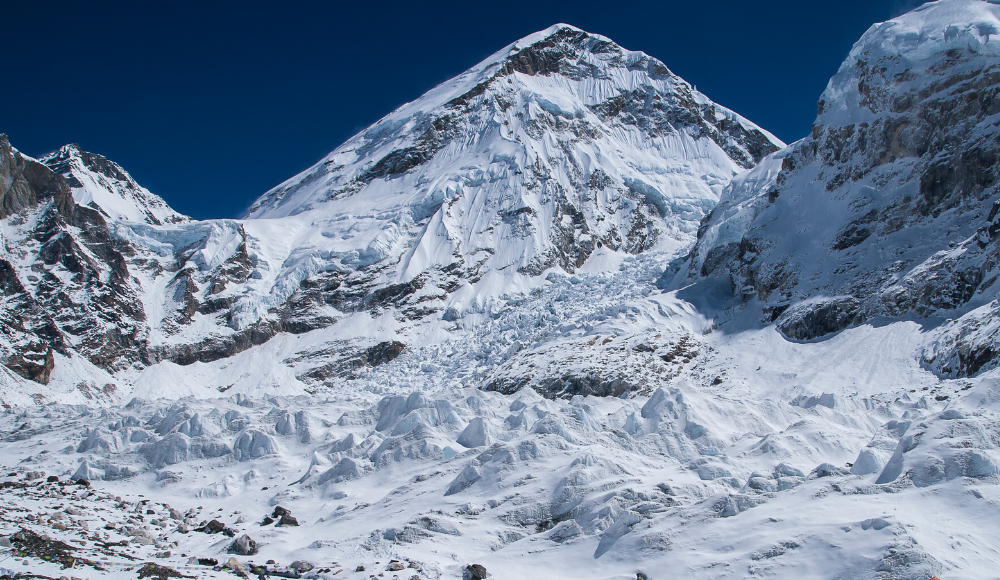
Looking for the best trekking experience in October? The Everest Base Camp Trek is waiting for you! This time of the year is ideal in terms of the scenic expressions of the mountains as the Himalayas gradually opens up its sky and reveal the most beautiful version of itself.
The trek includes climbing to the base camp of Mount Everest (5364 m) which requires a good level of fitness and stamina. The journey begins with a scenic flight to Lukla, followed by a 13-day walk through diverse terrain that starts off lush and green, gradually changing to arid before getting into the Himalayan backdrop. The trail takes you through the lowlands, passes over the high Sherpa villages of Phakding and Namche Bazaar, which are located in the Everest region.
The view of Mount Everest is breathtaking every step of the way. It also provides excellent views of Cho Oyu, Lhotse and Makalu. The trail to Everest Base Camp is a path less traveled with only a few trekkers on it every season. The trek to Everest Base Camp starts basically from Lukla (2860m).
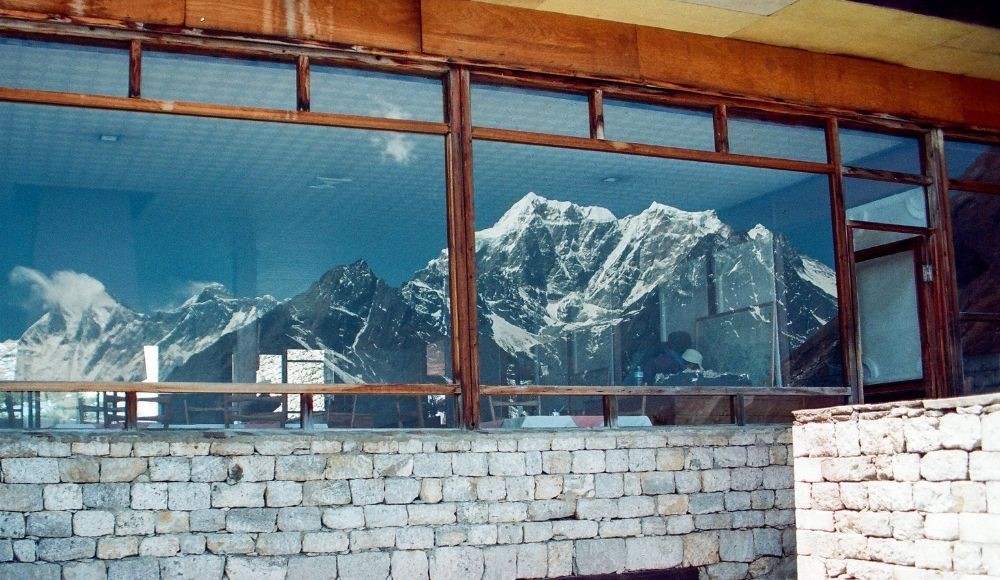
The trek starts at the village of Lukla, which is located at about 2860 m above sea level. The first day out of EBC Trek will be over high ridges with ups and downs and small grasslands. There are tea houses available at every stop of the way to facilitate you with your accommodation.
Exploring Sherpa culture, their lifestyle and beautiful mountain panoramas are the most beautiful part of trekking to the Everest Base Camp. Revered for its awe-inspiring mountain aura, and world-renowned tales of mountaineering achievements, Mount Everest is one of its kind and the highest point on earth.
Trekking is accessible to almost every trekking enthusiast. However, mountaineering is for those who invest themselves in the mountains. A lot of people trek to the Everest Base Camp in quest of exploring the unseen part of the world where the fabled yeti is still a mystery and mountain that outnumber its tragedies with impeccable and inspirational records.
Autumn's October is perhaps the most beautiful month of the year for trekking and mountain exploration. It is also called the mid-month between Sharad and Hemanta (Seasons in Nepali). Trekking to the Everest Base Camp in October is rewarding in terms of the visibility, humidity, temperature and weather. You can explore a wide variety of flora and fauna, and also witness the most spectacular mountain sceneries during trekking in the Khumbu region of Nepal.
The iconic Everest Base Camp.
Tengboche Monastery: The place where spirituality is nurtured.
Khumbu Glacier - the largest glacier in Nepal.
Namche Bazaar, the Sherpa Capital.
Sagarmatha National Park - the highest protected area on earth.
Everest Memorial at Chukpi Lhara: the world's highest memorial to remember the tragedies of mountaineering in the Khumbu region.
|
Trek Name |
Everest Base Camp Trek |
|
Trekking Area |
Everest Region |
|
Himalayan Range |
Mahalangur Himalayan Range |
|
Base Camp in Nepal Side |
Southern Base Camp |
|
Trek Days |
14 Days |
|
Start/Finish |
Kathmandu |
|
Max. Elevation |
5645 m. at Kalapathar |
|
Elevation of EBC |
5364 m. |
|
Difficulty |
Strenuous |
|
Approx. Trekking Distance |
130 KM |
|
Accommodation |
Teahouse |
|
Average walk per day |
5-6 hours |
Mount Everest stands at 8,848.86 meters (29,031 feet) above sea level and is located in the Khumbu region of Nepal. It is part of the Himalayan mountain range and is bordered by Nepal on the south and Tibet on the north. The mountain was first conquered by Sir Edmund Hillary and Tenzing Norgay Sherpa in May 1953. Since then, it has been scaled by many expeditioners. For the first few decades after the race to the summit was first completed, there were no significant official records or lists of climbers. Antarctica was still largely unexplored during that time, and many perceived Everest as just one more mountain to conquer; this is reflected in Everest being named the highest mountain in the world for all those years.
Trekking to the base camp is one of the best things to do in Nepal. It is also a wonderful opportunity to explore rugged trails, monasteries, sherpa lifestyle and culture and more importantly the most beautiful and highest Himalayan Ranges on earth.
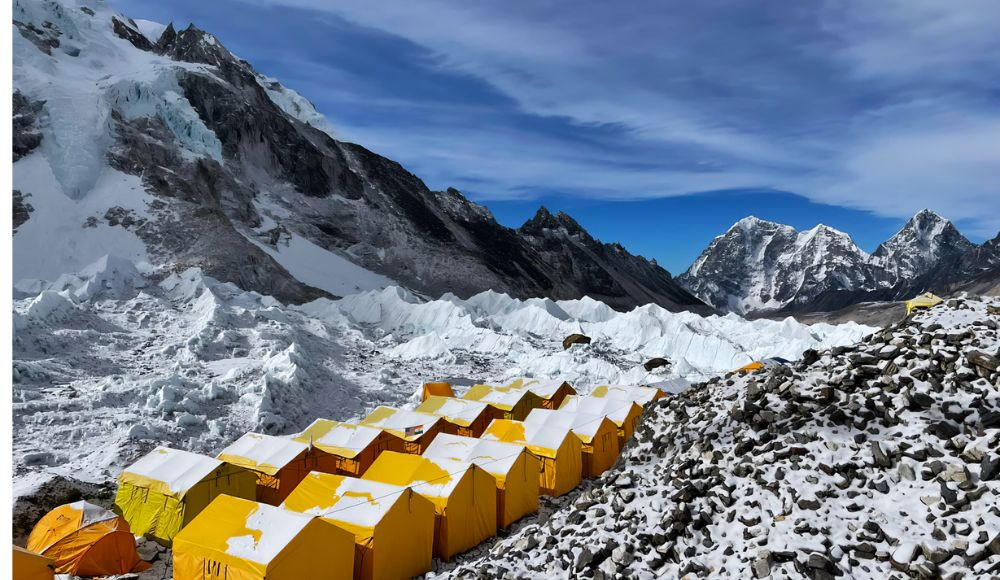
We all know what Everest is. It is the highest mountain on earth, there are many stories from people who have scaled it and conquered it, and we all have a relative who went on the trek "for themself" regardless of how much time and money was required. There are many aspects to Everest, but one of the most interesting ones to learn about is its Base Camp Trek.
Everest Base Camp Trek is one of the most famous trekking routes of Nepal. It lies on the Nepalese side of Everest that starts from Lukla and passes through the villages of Shivalaya, Phakding, Namche Bazaar and Tengboche over a span of 14 days. The trek is strenuous and takes one through some of the highest places in the world; so, it's definitely an unforgettable experience that gives a feeling to the unimaginable vastness of the world.
The trek starts from Lukla Airport which is an airstrip situated at 12,400 feet and extends to Namche Bazaar which is situated at 4600 feet. In Namche Bazaar you will be able to see numerous shops and restaurants run by Sherpa people. The Everest View Hotel, Tengboche, Dingboche, Lobuche, Gorakshep, EBC and returning back to Lukla is indeed one of the most beautiful experiences in Nepal.
When you think of Nepal, your mind probably doesn’t immediately go to blistering heat and snow-covered hills. But many trekkers do head to Nepal in autumn for the view of mountains coated in a fresh layer of snow. If you're considering trekking in October, there are a few things to look out for. The Himalayan mountain range is called the “roof of the world,” but its slopes can be a dangerous place for unprepared trekkers. So, getting prepared and so geared up for the take would be an advantage. This also makes trekking in the Everest Base Camp a good time for novice and experienced trekkers.
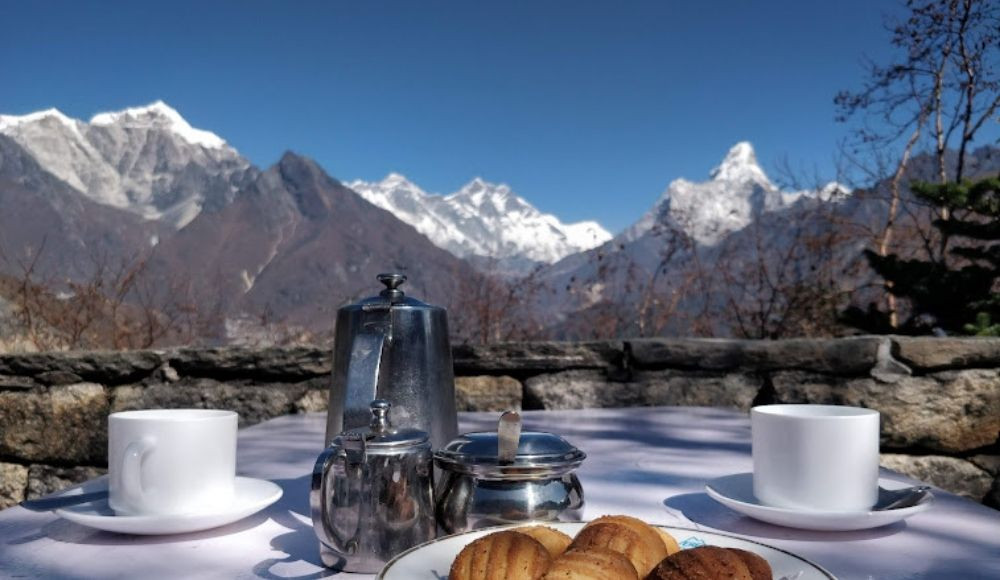
The Everest Base Camp is the most popular climb in Nepal, and one of the best treks available. This 14-day trek offers a unique experience that few other routes offer, with opportunities to witness Mount Everest. The beautiful scenery along the way will definitely make memories of your trip last a lifetime!
The October month comes with a bang. An opportunity perhaps to witness the most beautiful Himalayan panorama and incredible flora and fauna of Sagarmatha National Park. What’s more enticing is you can explore a diverse range of experiences during the trek. In addition, October offers the most stunning landscapes and clear views. This time of the year, the sky is warm and clear, the weather is fine and the temperature is moderate. So, the Everest Base Camp trek in October is rewarding in terms of experiences, climatic conditions and trail health.
The Everest Base Camp Trek is a perfect choice for those who are seeking pure exhilarating thrills, a chance to test their skills and abilities in demanding terrain, or just to experience the beauty of Nepal's Khumbu Valley. The most popular time for this trek is from March-May when the weather and conditions are excellent. From June-November is high season in the Khumbu Valley so expect to share the trail with more trekkers.
The "Everest Base Camp Trek" is a package and includes everything you need for an unforgettable trekking holiday. It is one of the most popular treks in the Khumbu region. This trek begins from Lukla Airport, the gateway to Everest and ends at the foot of Mount Everest. There are several variations to this trek which will have you walk through lush forests, cross rivers, climb mountains and more. Here is the detailed itinerary of the iconic Everest Base Camp trek if you are preparing to trek in the month of October.
Kathmandu is a vibrant city of over 1.5 million people, with a rich culture and history. The country’s most populous metropolis is also the capital and its major centre for business and trade. However, it is important for you to understand what Kathmandu looks like before embarking on this new journey. The spiritual and cultural city of Kathmandu is known to have some of the most beautiful cultural attractions, a lot of temples and heritage sites. The Medieval Durbar Square and courtyards are the ideal remains of the past royal ancestry of this country.
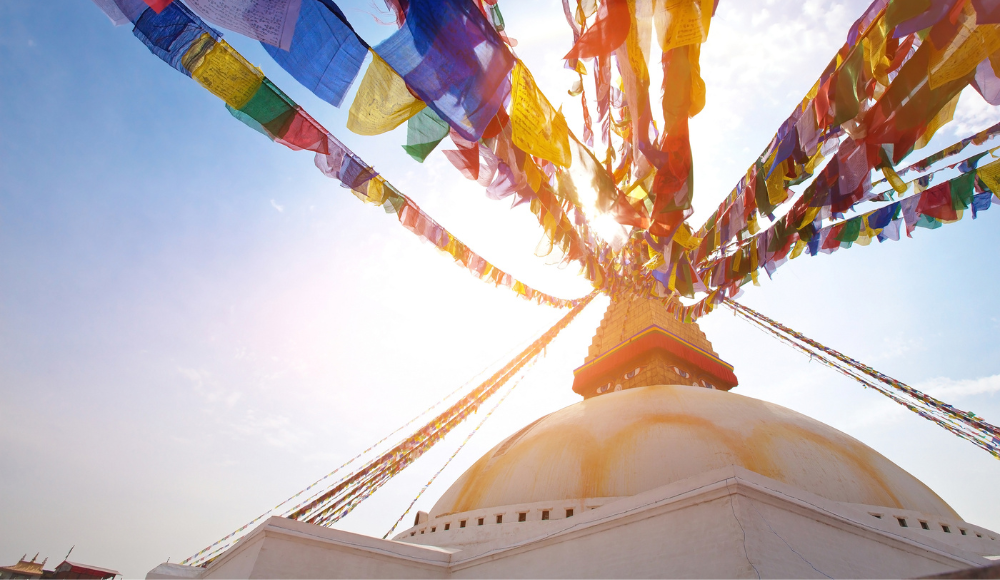
On the first day, you will be arriving in the capital, Kathmandu and then you will be escorted to your accommodation facility by our office representative. You will be briefed regarding the tour plan and later you can enjoy your evening in the Thamel area. There are numerous nightclubs and cosy lounges to spend your time in.
This day, you will be visiting several heritage sites and preparing for the iconic base camp trek to Everest. Again, our representative will be briefing you on your backpacking and will help you arrange your clothes and gear if you need any. You will be briefed in detail about the itinerary and if you have any confusion, then it will be time to quench your query. Attributes of culture and tradition abound in Kathmandu. Another fascinating aspect is the kind of folks that live in the streets and alleys. So, you can immerse yourself in the hospitable atmosphere of the city and enjoy your time.
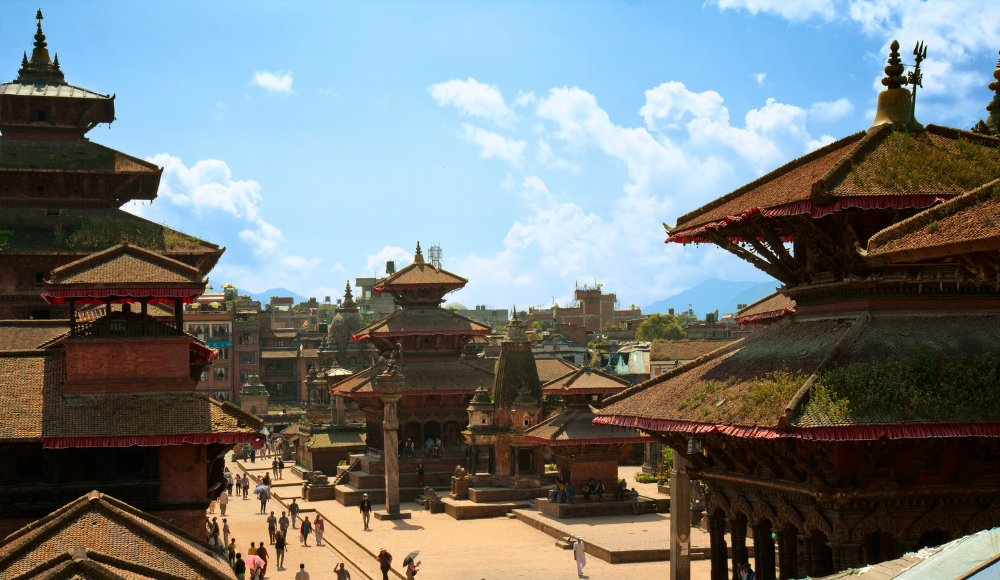
This city, which is heavily influenced by Hindu and Buddhist cultural ideals, hosts amazing chariot festivals and other events. If you're fortunate, you might have the opportunity to see some chariot festivities taking place in the paved alleys of the Basantpur and Asan areas. One of the day's top attractions is the adjacent Thamel's Kathmandu Durbar Square. Also, you can plan your visit to the Boudhanath Stupa or Swayambhunath Stupa.
you'll see spectacular mountain views, meet with the locals, and enjoy the breathtaking scenery. You will be flying to Lukla today and trekking to a village named Phakding on the way to Namche. Lukla is a town in the Khumbu region of the Sagarmatha National Park, serving as a departure point for trekkers heading to Mount Everest base camp. The town also has many hotels and lodges for visitors including those who are not trekking to Everest. The airport, named Lukla Airport, is located just outside the village of Lukla, at an elevation of about 2860 meters above sea level.
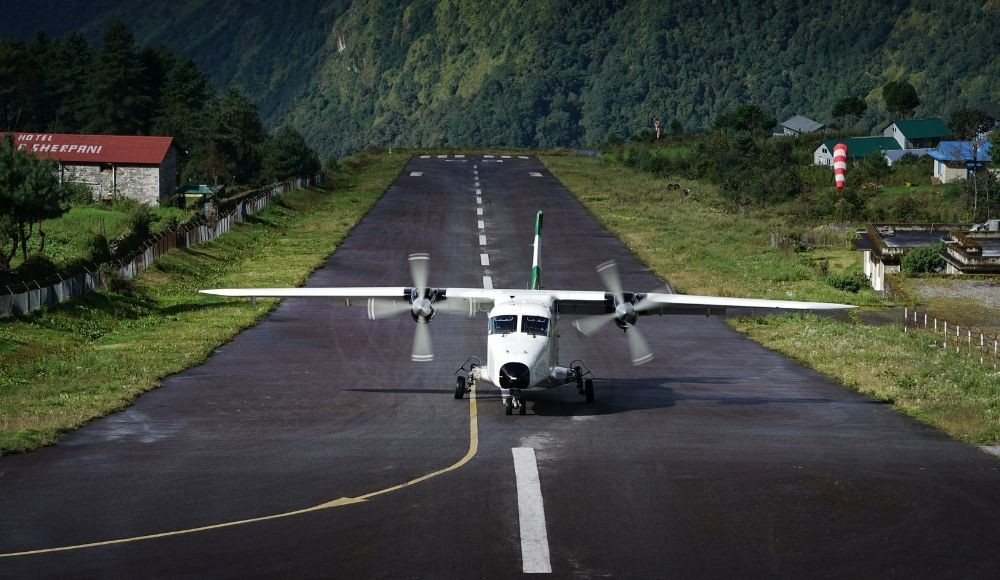
Lukla Airport, which is the highest civilian airport in the world, is a single-runway airstrip. It is currently served by several domestic airlines. Due to the shortness of the runway and difficult approach it has only ever been served by STOL (short take-off and landing) aircraft, i.e. propeller planes like Twin Otter or Fokker.
Lukla can be reached by plane in 30 to 40 minutes from Kathmandu. You will refresh yourself and get ready for the hike after arriving in Lukla. You will then trek towards the village of Phakding. Some of the trail's sections are paved, while others are muddy and rocky. You won't have any trouble moving along as much of the route will be downhill. Astonishingly lush vegetation surrounds the trail as well.
You will lose roughly 250 meters from Lukla because Phakding is at a lower elevation and Lukla is at a higher elevation. It is quite amazing to hike along the Dudhkoshi's banks while passing through various Sherpa villages. In Phakding, you will be staying at a lodge.
This day's trekking is a particularly fascinating one. You will encounter some stunning scenery and enlightening locations along the trail, despite the fact that it will be difficult with several stair hikes uphill. It's very attractive to see Sherpa settlements spread out along the trail. You will hike to Monjo in the first part, where you will enjoy a customary lunch and take in the breathtaking mountain panorama.
The first section of the walk, up to Monjo, is simpler than the remainder. You will be heading toward Namche Bazaar after eating at Monjo. Some hikers find this to be the beginning of a challenging, uphill trip from Monjo.
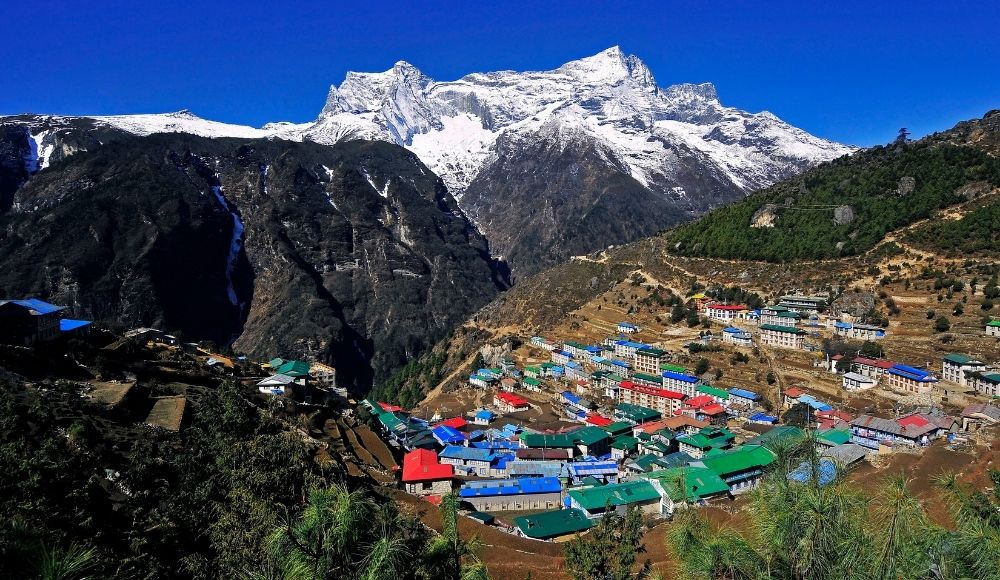
The walk begins at Larchedovan and takes between two to three hours. The breathtaking view of rivers and valleys feels great, as do the thrilling suspension bridges. You will have your first glimpse of Mount Everest from Top Danda at the Larchedovan and Namche Bazaar portion in the middle of the trail. From Phakding, it would take you 5–6 hours of trekking to get to Namche Bazaar. The impressive waterfalls, Namche Bazaar, and herds of yaks all give off a distinctly Himalayan vibe.
You'll be acclimatizing in Namche on this day. A really exciting part of the day is a few acclimatizations walks through Namche's hills.
Namche Bazaar is a small town in the Sagarmatha National Park that is in the Khumbu Trekking region of Nepal, which has been rated as one of the top travel destinations in the world. Namche Bazaar still retains its traditional Tibetan culture and frequent festivals.
Namche Bazaar got its name from a large bamboo-covered trade market built by Sherpas (Nepalese people) originally to conduct trade with Tibetans, who lived nearby on Mount Everest.

To go to Everest View Hotel, you must first hike upwards in the early morning. To get there, it takes roughly two hours. Celestial is the lovely daybreak and magnificent Everest in the distance. The Everest View Point at the Amadablam viewpoint, also known as the Namche viewpoint, is a must-visit spot while you are in Namche because of the lovely surroundings and the exceptional hospitality of the Sherpas. You can see Everest, Amadablam, Lhotse, Nuptse, Kangtenga, Thamserku, Kongte, Tabuche, and many other nearby peaks from the Everest View Hotel. You will hike towards Khumjung village, from where the Khumbu region of Everest gets its name, after exploring the Everest View Hotel. After lunch, you'll head back toward Namche from Khunde.
You will be walking toward Debuche after spending two unforgettable nights in Namche Bazaar. Early in the morning, you'll go out on a hike from Namche Bazaar and climb a stairway. You will arrive at a flat trail from Namche Bazaar after 15 to 20 minutes of hiking. This area is easier to trek to than other places. You will be fascinated by the spectacular mountain views along the way.
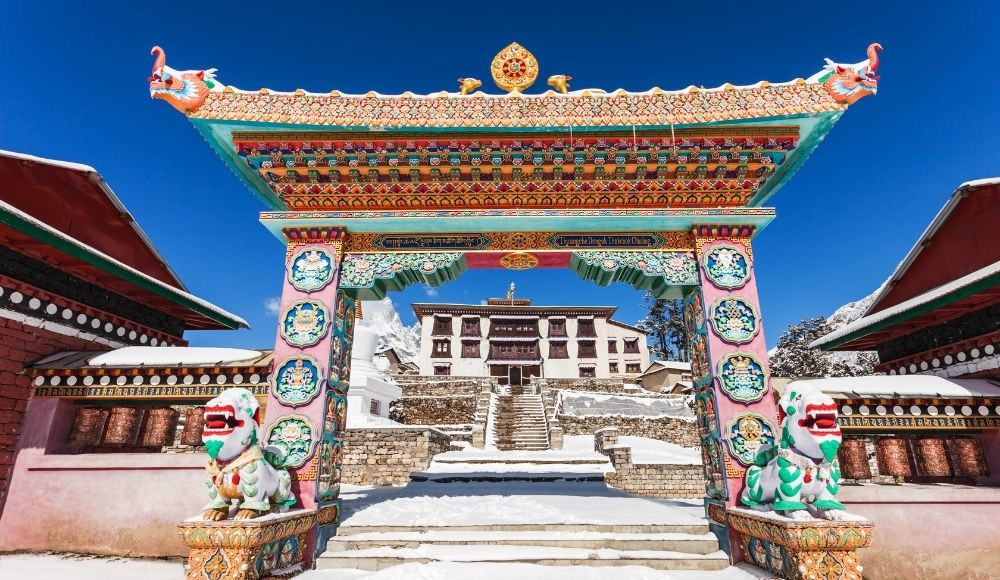
You will arrive at Kyanjuma after two hours of hiking from Namche Bazaar. To get to Punki Tenga from Kyajuma, you must hike for around 45 minutes downwards. This is where the tributaries of the rivers Imja Khola and Dudh Koshi meet. In Sherpa, the word "Tenga" refers to a confluence or intersection. You must produce your permits at a Nepal Army checkpoint that is a short distance ahead.
Following the checkpoint, an hour and a half of steep hiking is required to reach Tengboche Monastery. Mountains and an amazing sunset may be seen from the Monastery's back area. The Debuche is located a short distance in front of Tengboche. You will spend the night in a lodge in Debuche.
From Debuche, you will start your trek toward Dingboche. After crossing a suspension bridge, you'll start an hour-long, moderate ascent. The hiking trail is neither particularly hard nor challenging. It's also worthwhile because you'll get to explore lovely Sherpa settlements and take in breathtaking mountain views.
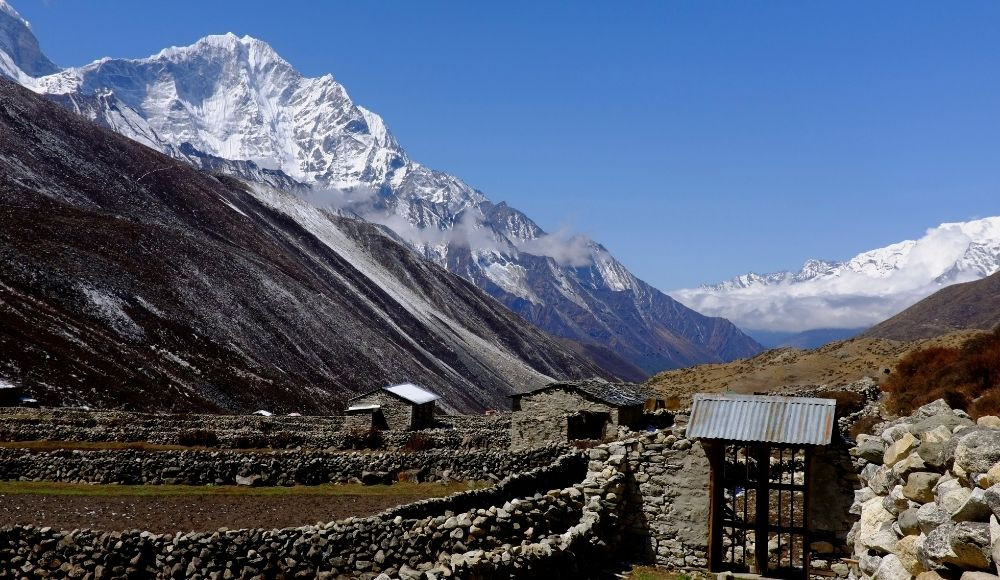
After crossing a river, Pangboche will lead you to a stunning vantage point via a thrilling climb. You may explore the magnificent mountain range that extends along the northern edge of the hill from this vantage point. The view of the mysterious Mount Amadablam is breathtaking. You will arrive at Dingboche after a 40-minute, gradual ascent. You will spend the night at Dingboche. From Dingboche, you can view the stunning Sherpa village and surrounding mountains. Additionally, it serves as a rest stop for local hikers and peak climbers. A small number of hotels and lodges provide lodging options.
The following day, when you will arrive at an elevation of 4940 meters above sea level, you must acclimatize to the new altitude. In the vicinity of Dingboche, you will hike some hills and explore the vantage points. You will hike to Nagarjuna Hill, which is located at a height of roughly 5100 meters above sea level.
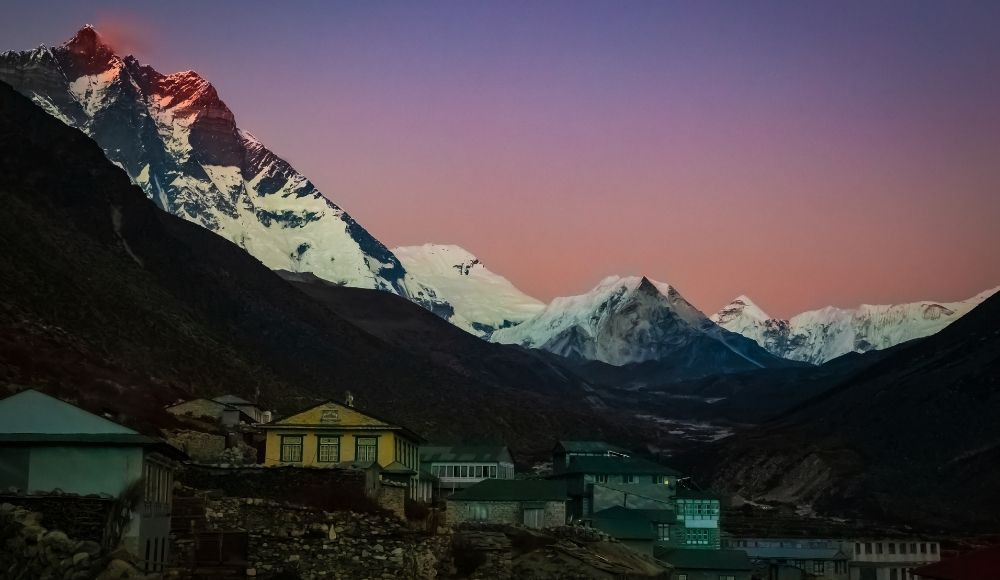
The breathtaking views of some Himalayan peaks, including Lobuche East (6119m), Lobuche West (6145m), Kangtega (6685m), Taboche Peak (6367m), Thamserku (6608m), and Ama Dablam, can be seen from the top of the hill (6856m). The walk offers stunning views of Pheriche hamlet and a few other Sherpa villages.
You'll go off on a hike in the direction of the lovely Lobuche settlement. It is a beautiful destination to visit because you will be exploring several famous and tragic locations along the trail, which is located at an elevation of 4950 meters.
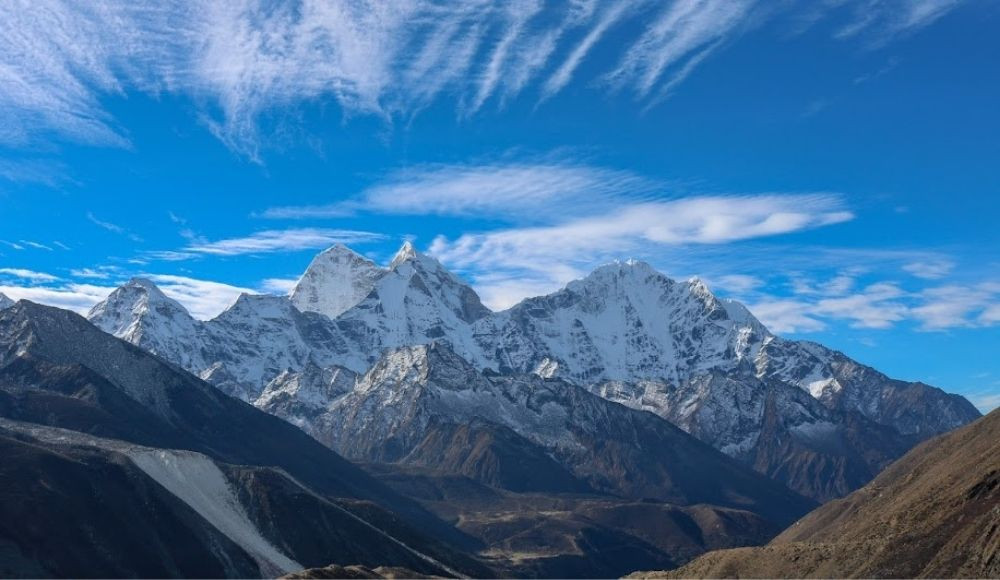
Early in the morning is when you will start your walk. You will arrive in Thukla after two hours of slow, incline-increasing walking. You can take a short break at Thukla before starting your hour-long ascent to the 4830-meter Dughla pass.
On top of Dughla Pass, you can see a nearby memorial. The memorial garden honors people who perished in mountain disasters while attempting to ascend Mount Everest. Being the highest memorial in the world may be interesting to some, but some people find it upsetting to travel via this route in the Everest region. Every hiker who visits the memorial is reminded of the traumatic mountain catastrophes that have occurred ever since climbing began in the 1950s.
You'll ascend in the direction of Lobuche after exploring the Pass. You will eventually arrive at the Khumbu glacier's glacial moraine. The trek offers breathtaking views of the Nuptse, Pumori, Lingten, Changatse, and Lola mountains. Kalapathar is seen from the Khumbu glacier in the distance. You will eventually arrive in Lobuche, a small village at 4940 meters, after roughly an hour of walking. We'll spend the night in a lodge in Lobuche.
As you approach your destination, the base camp of Mount Everest, it is the most interesting day of the entire trek. On your trek, you'll pass the Khumbu glacier. The most thrilling aspect of the walk is arriving at the base camp, despite the glacier's tough terrain and sedimentary rocks' difficulty making it impossible to hike there. You will arrive in Gorakshep after a steady two to three-hour ascent and descent.
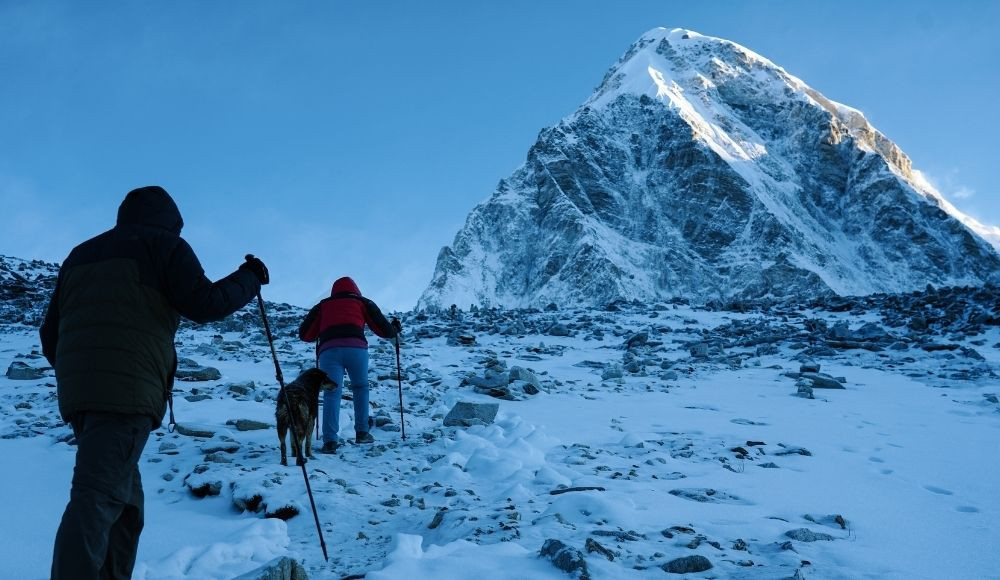
The destination for the day is Gorak Shep. You will continue your walk along the Khumbu Glacier after lunch in Gorak Shep. You will arrive at the magnificent Everest Base Camp after a brief climb of roughly two hours. If you are hiking in the autumn, you can witness individuals preparing for their summit climbs along the trail in the northern fringe.
You will return back to Gorakshep in the evening for your night stay. Explore the high altitude lodges, their hospitality and some mountain stories.
You will climb up to Kala Patthar, which is located at an elevation of 5,644.5 m/18,519 ft, in the early morning. From Gorak Shep, the hike to Kala Patthar takes roughly two hours. To see Mount Everest and other summits, Kala Patthar is the ideal viewing point. This summit offers stunning 360-degree views of the Khumbu region of the Himalayas. Additionally, it offers the best views of several amazing mountains, like Mount Pumori, Amadablam, Everest, Lhotse, Cholatse, Nuptse, Lola, Changatse, and numerous other nearby mountain peaks.
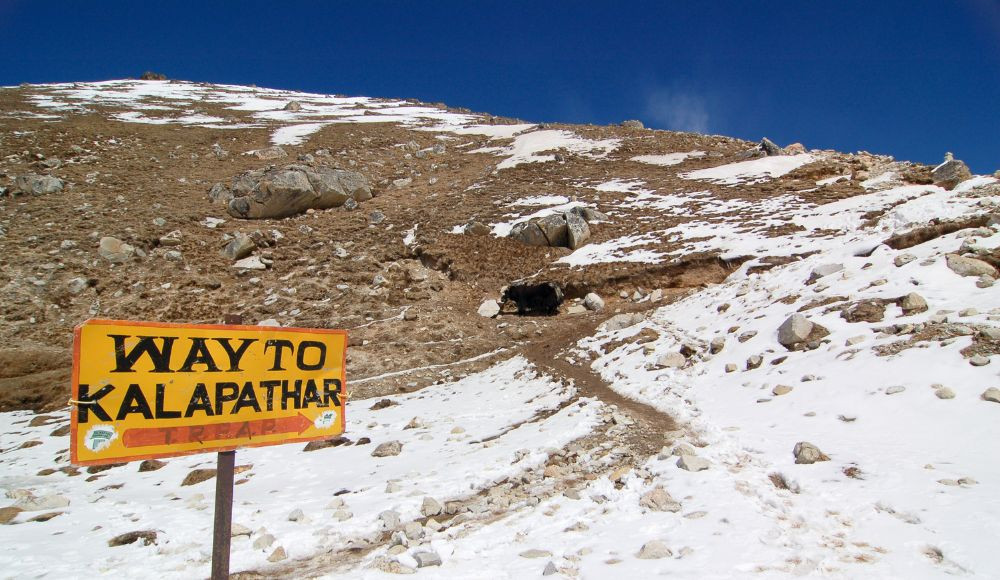
You'll spend some time in Kalapatthar before heading back to Gorakshep. It requires a steep downhill climb of roughly 45 minutes to get there.
The return trip starts when you get to Gorakshep. From Gorakshep, you'll hike in the direction of Pheriche. You can reach Pheriche after a 4-5 hour downhill trek, and it would take you another 3 hours to reach Pangboche. Today's journey is primarily downhill. As you descend to the lower level this day, you will begin to feel better. You'll be residing in Pangboche.
You'll get ready for the hike after an early breakfast. You will travel from Pangboche to the Namche Bazar on this day. This trek's section is simple and manageable. While there are occasional downhill sections, for the most part you will be hiking on a somewhat steep track. As a result, the walk from Pangboche to Namche becomes simpler. Trekking from Pangboche to Namche Bazaar takes roughly 6-7 hours. You can see the stunning Himalayas and Sherpa communities. Overnight stay in Namche.
The last day of the trek is today. The journey is a little further but not as challenging today. You will walk toward Lukla after eating breakfast in Namche Bazaar. As you leave the checkpoint to travel to Lukla, you will arrive in Jorsalle and Monjo.
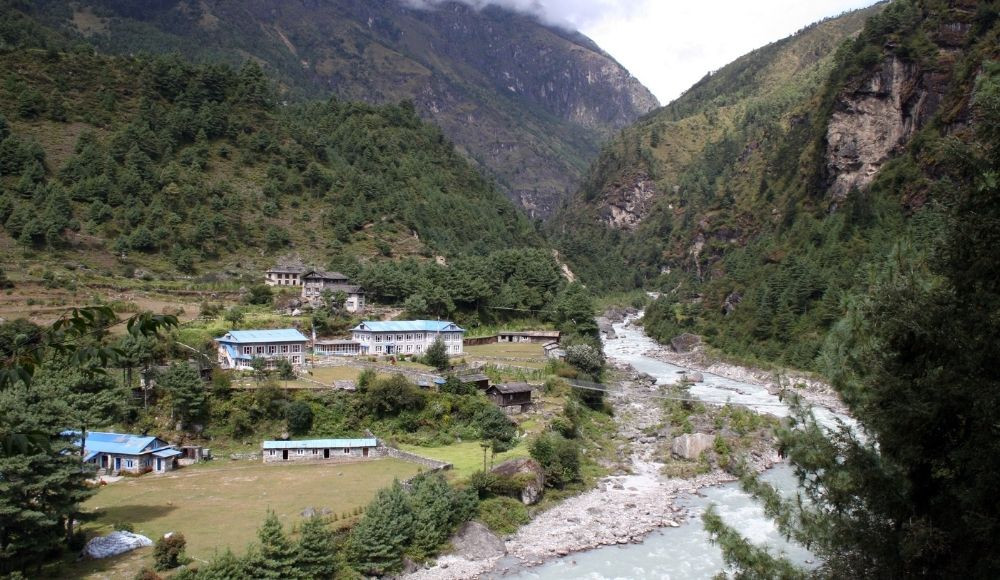
You will arrive in Lukla after exploring the incredible Mount Everest and gaining life-changing experiences. You will spend the night in Lukla and spend the evening visiting the local pubs, clubs, and coffee shops.
You will return to the Kathmandu valley on this day. You can get a flight back to Kathmandu from Lukla. You'll arrive in Kathmandu during the day. You can experience Kathmandu's nightlife or eat some Nepalese cuisine in the evening. Collecting tremendous memories form the iconic mountains, the trip to Everest Base Camp in October ends.
With this, the Everest Base Camp Trek will have been brought to an end. We will accompany you to the airport for your flight transfer while paying attention to your departure time. You'll leave for your destination with a ton of amusing and exciting recollections as well as visually compelling photographs.
Everest, the highest mountain on Earth, is not a destination that can be reached by car or train. Visitors must endure an all-day trek from Lukla to the town of Namche Bazaar, Everest Base Camp and Kala Patthar. Everest Base Camp Trek is one of the most popular treks in the world and attracts people from different parts of the world. Trekkers have a wonderful time in this area, amidst nature's beauty, surrounded by glorious views. The variety of mountains and high hill ranges to explore on the way around make it all worth their while.
Lose yourself in this pristine and scarcely populated corner of Asia along which many adventurers travel. Immerse yourself in the extraordinary beauty of the fabled Khumbu valley filled with towering cliffs, glaciers and majestic peaks far above your average mountaineering skills. The trek features views of Mount Everest, as well as other Himalayan giants such as Makalu and Cho Oyu, as well as Shishapangma, Lhotse and Nuptse. It's an experience that can't be beaten.
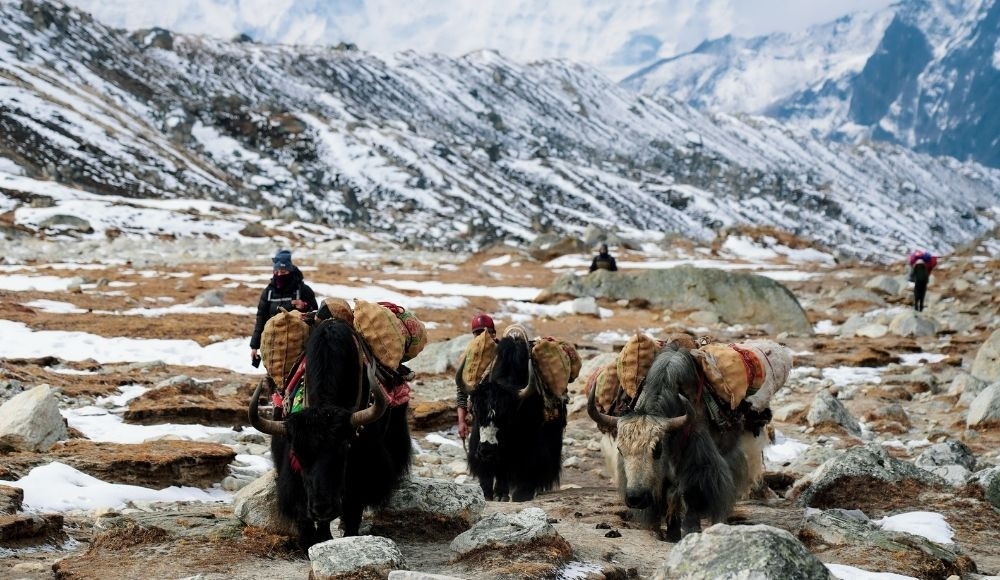
This Trek is the most popular and best route to take when trekking in Nepal. The total duration of this journey ranges from twelve to fifteen days, depending on one's physical ability and desired level of comfort.
The Everest Base Camp Trek offers a diverse range of rewards and rich experiences for tourists who want to see some of the best views that the Himalayas have to offer.
So what's so special about this trek? It offers an opportunity to see the world's highest peak, the mighty Mount Everest. In addition to this, there are various other peaks of varying height and terrain throughout the journey. The landscape is diverse and changing. Sceneries range from pine forests, steep rocky mountains and barren land with a mix of volcanic rocks, juniper bushes, rhododendrons and lots of Sherpa houses along the way.
Along the way, there are also various monasteries which are also very popular among tourists. They are very colorful. Some of them are still undergoing restoration after being damaged by the recent earthquake in April of 2015. After trekking Everest Base Camp and exploring this area, you will be able to appreciate the hard work of these people who come from different religious backgrounds such as Tibetans, Buddhists and Sherpa people who have protected and maintained these beautiful monasteries for generations.
Everest Base Camp is located at 5,364m of elevation. It is a place to prepare for the trip higher up the mountain and also a place to come back from after exploring different sections of the mountain and foothills. Many tourists stop here on their way to Mount Everest’s summit. Many visitors to Nepal feel compelled to pay a visit to Everest Base Camp before they leave Nepal. The popular base camp is located in the southern and northern side of the Himalayas. The southern side lies in the Nepalese territory whereas the northern Base Camp is in Tibet as the mountain acts as a border between Nepal and China.
This region is well known for its mystifying and beautiful natural environment with its unique culture and lifestyle. From Kathmandu, it takes roughly 10 days to reach Mount Everest's base camp. You visit the breathtaking Everest Base Camp after a flight to Lukla and a strenuous hike via Namche, Tengboche, Dingboche, Lobuche, and Gorakshep. The Lobuche - EBC portion of the journey also offers fantastic opportunities to visit the jagged Khumbu glacier. During the trip, you will be astounded by the majestic Himalayas, and local lifestyle besides the lushness of Sagarmatha National Park.
Also Read: Where is Mount Everest Located?
If you're interested in trekking to Everest Base Camp, an arduous and challenging journey that is taxing on the body and spirit, here are some reasons why to go up the tallest mountain in the world.
For example, if you live in a country where there are no mountains or relatively low-elevation mountains, such as China or Australia, it may be worth your while to travel far away. You'll have the opportunity to see and experience the tallest mountain in the world. And if you enjoy trekking, you'll have no shortage of breathtaking views and experiences, such as witnessing mighty waterfalls or watching yak caravans pass by on the trail. Meanwhile, exploring the Sherpa culture is something to cling to throughout the trail and you can explore the vivid attractions of the cultural dimension.
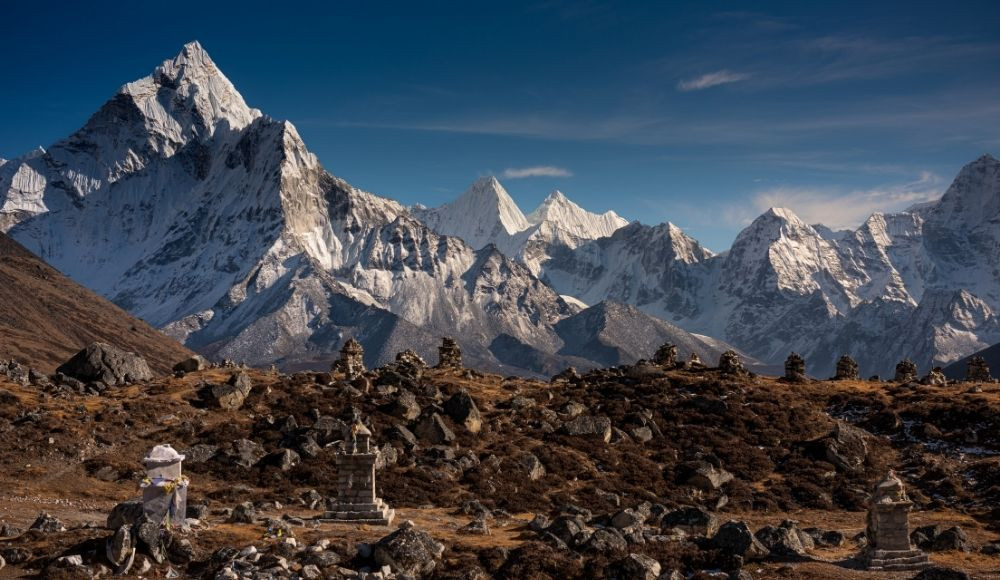
Another reason is that only hardy adventurers dare to trek to Everest Base Camp. It takes a lot of courage to climb a difficult path where you need to rely on your own strength and knowledge of wilderness survival skills.
It's also a good way to test your mettle, which you'll need in the future when you encounter obstacles or challenges in life. Your trekking experience will serve as a useful reference for better dealing with life's struggles.
So what is Everest Base Camp? It is the last stop for many lightweight trekkers who come to Nepal for a look at the great Himalayas, particularly Mt. Everest. From here, most people simply leave the trail and go back to Kathmandu or head down to civilization.
But many of us are intrigued by the thought of entering a remote area that's inaccessible to most people on Earth, where you're physically challenged and have to rely on your own strength and stamina. And what's more? The spiritual dimension is also there, which you'll experience once you enter into the wilderness.
|
Permit |
Sagarmatha National park entry fee |
Khumbu Pasang Rural Municipality entry fee |
|
Cost for Nepali |
NPR 100 |
- |
|
Cost for Indian |
NPR 1500 |
NPR 2000 |
|
Cost for foreigners |
NPR 2000 (~US$17) |
NPR 3000 (~US$25) |
The first thing to do is to prepare for your adventure. Get a thorough medical checkup and don't forget to get vaccinations and prescriptions if necessary. Bring warm clothes, enough supplies, as well as an emergency kit - and don't forget about the most essential item of all: your sense of adventure!
Base camp? Everest base camp is still a long journey from home. You can either fly via Helicopter there or trek from Lukla all the way to Base Camp and return. After having flown over the Himalayas, you'll see hundreds of tents dotted across the vast Khumbu area. You won't be able to recognize this land of frozen peaks and snow-capped mountains with your own eyes. The sense of adventure truly unfurls if you trek to this majestic mountain land.
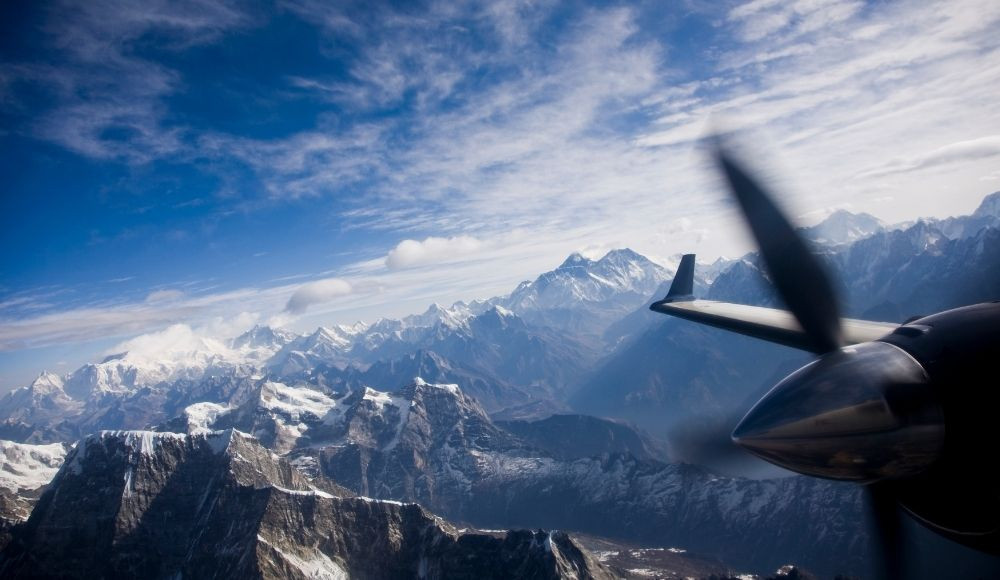
Another way is to take a quick mountain flight that begins right from Kathmandu for one hour and ends in Kathmandu. The Everest Mountain Flight from Kathmandu may not provide you with authentic wilderness, but it surely fascinates you with the mind-blowing aerial views of the Himalayas including Everest.
Everest is the highest mountain on the planet. Capable of reaching an altitude of 8,848 meters, it's said to be a place where dreams come true and impossible difficulties are met head-on. But what exactly is it?
Everest is much taller than it looks. We didn't even include the other mountains surrounding it! The best way to picture Mount Everest is to think of a gigantic skyscraper with a flat top; its height often exceeds our standard definition of what should be called a mountain.
Wondering how high is Mount Everest? Mount Everest is 8848.86 M high as defined by the survey of Nepal and China. It is a newly adopted height after the British team calculated it to be 8848 meters in 1956. The height of Mount Everest is 29,031.7 ft in feet.A trek to Everest Base Camp is a tour of the tallest mountain in the world, Mount Everest. This trek is not for beginners and generally requires a lot of physical preparation both before and during the trip. If you are an experienced trekker, you may want to join this challenging adventure that offers some astounding views of Himalayan peaks and glaciers.
The summit of Mount Everest is 8,848.86 meters (29,028 feet) above sea level while the base camp is situated at 5,364 meters. It's possible to reach base camp after hiking for several days or within a day by taking a helicopter. There are several factors that influence trekkers' comfort and success during their trip. Thirst and hunger to complete the trek are certainly two questions you will have to consider when planning this adventure. Other factors include weather as well as your physical strength and endurance.
The trek to base camp takes 6-10 days depending on which trail you take. Assuming you spend 4 days in advance and another 2 days on the trail, including acclimatization, you'll need about 14-15 days to prepare for hiking the trek from Kathmandu to Everest Base Camp. The first essential step is to get a high-quality pair of boots. This will ensure that your feet are protected very well in case of an accident. A good pair of boots will last you for a long time. Make sure that the pair of boots you get for the Everest Base Camp Trek is waterproof, warm and has a good grip. Even though snow-capped mountains during winter can be appealing, your feet might slip on ice if your boots are not made from waterproof material.
Another important consideration when preparing is to get ready for pain and aches that might appear in your legs, knees and hips during the trip. The chances of altitude sickness are there but with positive motivation and enough hydration, you should be able to complete the trek.
Also Read: How difficult is Everest Base Camp Trek?
There are many benefits to acclimatization during a trek in the Everest region. Acclimatization to the altitude is necessary, otherwise, your body will react badly when you ascend in elevation. Acclimatization also helps prevent mountain sickness which can be dangerous and life-threatening. An ideal time for acclimatizing is during the trek. Slow and gradual ascent makes the trip successful. It is important to note that altitude sickness is cumulative, so every time you ascend a peak or pass you need to allow your body time to acclimate before you climb again.
If you are going on a trek at 3000 m or above, it is crucial that you acclimatize for at least one day. It may take a day or two for the body to adjust so it's essential that you rest and eat healthy during this time. It is also important to take it slow and easy after you descend from a mountain. Although hiking helps the acclimatization process, the final adjustment to higher elevation comes with rest. Because of this, you should avoid heavy exercise on the trail and keep in mind that your ability to perform strenuous activities will be limited until you are fully acclimatized.
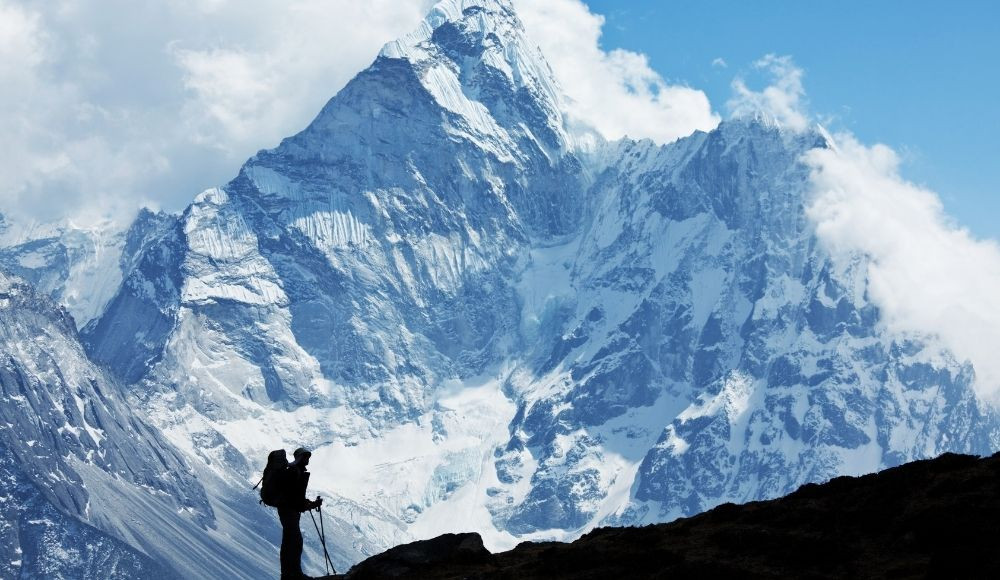
The symptoms of altitude sickness often begin 6-12 hours after arrival at altitude for travellers who move directly from sea level cultures to higher elevations. The symptoms include headache, lethargy, nausea and malaise. In severe cases, altitude sickness can lead to death if not treated.
The symptoms of altitude sickness vary depending on the individual. In most cases, individuals experience a headache at first and then become fatigued and lightheaded. You may feel warmer than usual while walking or hiking at high altitudes due to the increased oxygen in the air. In severe cases, considering heli evacuation is important. However, in mild cases, taking an acclimatization break or losing elevation and staying hydrated can be helpful.
If you love exploring new destinations then Nepal is the country that has all the qualities to capture your interest. The country is spectacularly beautiful, fascinating and exciting in every possible way. The Kathmandu Valley is known for its auspicious culture, old architecture and mythological traditions. If you want to trek in Nepal, you can find the best accommodation options here – budget hotels, luxury hotels, hostels, and more. But in the mountains, you can find teahouses, small lodges and semi-luxury lodges for the stay facility.
The mountain area of Nepal is remote. So, expecting a luxurious stay may not be an appropriate expectation. In mountains, the landscapes are remote, so having good-enough food and well-to-do accommodation is the utmost affordable luxury. There are lodges and teahouses all the way up to Everest Base Camp. So, you do not have to carry your own tent or plan camping.
Also Read: Luxurious Hotels in Everest Base Camp Trek
If you are wobbling about whether you should pack extensively or pack light and what to carry and what not, then here are a few tips. Trekking in the mountains is difficult. As exciting as it may seem, having a tremendous load on the back is unnecessary and a burden in the mountains. While trekking, you should pack light and pack essentials. For the Everest Base Camp trek, having appropriate clothes and essential items is important. For details on backpacking, visit Nepal Trek Backpacking Checklist.
The greatest time to visit Everest Base Camp is on either side of the monsoon season, which lasts from late May to mid-Sep. The prime trekking months, with relatively consistent weather and decent visibility, are late September to early November and February to May.
November is a great month to hike to Everest Base Camp because of the pleasant weather and clear vistas. So, yes. November is also a good time to trek to Everest Base Camp.
October days are bright and range from 12°C to 16°C in the Everest region. You can therefore walk on warm, sunny days when making the climb to the Everest Base Camp during this season. However, at this time of year, the temperature decreases up to -5°C at night.
Beautiful scenery surrounds the Everest region, and many trekkers aspire to reach Everest Base Camp. It is an incredible accomplishment and well worth the effort to hike to the foot of the tallest mountain in the world. So, yes. Definitely, it's worth it to trek to the foot of the world’s highest peak.
Starting at Lukla, the route to Everest Base Camp passes through Phakding, Namche Bazar, Tengboche, Dingboche, Dughla, Lobuche, and Gorak Shep before arriving at the top. Even though the path back is the same, walking the other way offers equally beautiful views.